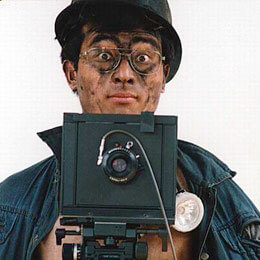Born in 1979 in the rugged landscapes of Shandong, China, Song Chao's journey into the world of photography began amidst the coal mines that defined his early years. From 1990 to 2004, he toiled as a miner, immersing himself in the harsh realities of this demanding profession. It was during this time, in 2001, that he first picked up a camera, finding solace and expression in capturing the lives and landscapes of the mining community. His lens became a tool for bearing witness to the struggles and resilience of the miners, resulting in powerful series such as "Miners," "The Residents of Mining Areas," and "The Sinking Mining Areas."
In 2004, driven by a burgeoning passion for the visual arts, Song Chao embarked on a new chapter, enrolling at the prestigious Beijing Film Academy to formally study photography and art. This period marked a significant transition in his life as he honed his craft and expanded his artistic vision.
Fast forward to the present day, and Song Chao has firmly established himself as a renowned artist on the global stage. His latest project, "Images in the Post-truth Era," delves into the complexities of our contemporary world, exploring themes of truth, perception, and reality in the age of digital manipulation and misinformation.
Now based between New York City and Beijing, Song Chao's work transcends geographical boundaries, resonating with audiences worldwide. His evocative imagery has found a permanent home in esteemed institutions such as Musée de l’Elysée in Lausanne, Réattu Museum, Shanghai Art Museum, and the Shanghai Center of Photography, among others.
Through his lens, Song Chao continues to challenge perceptions and illuminate truths, reminding us of the profound power of photography to capture the essence of the human experience. With each click of the shutter, he invites us to see the world through his eyes, to contemplate the stories untold and the realities often overlooked. In doing so, he leaves an indelible mark on the landscape of contemporary photography, enriching our understanding of both the visible and the invisible.
